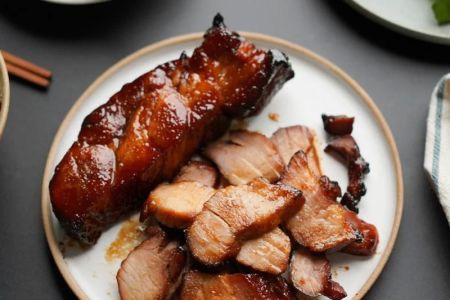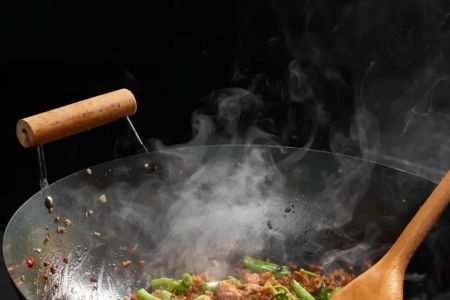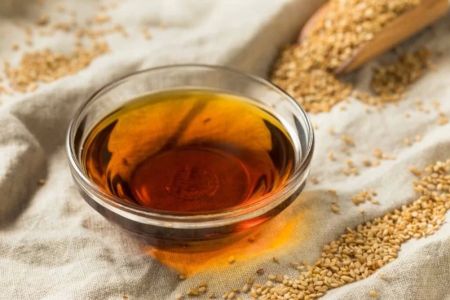What Sweet and Sour Sauce Do Chinese Restaurants Use? Discover the Secret Behind the Flavor
As a lover of Chinese food, one of the most iconic dishes that never fails to impress is the sweet and sour chicken. It's a vibrant, tangy, and slightly sweet dish that pairs perfectly with crispy chicken pieces. But what makes the sauce so unique and irresistibly delicious? I’ve always wondered this and, over time, I discovered that the sweet and sour sauce used in most Chinese restaurants is quite special, with some nuances that give it that restaurant-quality taste.
1. The Key Ingredients in Sweet and Sour Sauce
At first glance, you might assume that sweet and sour sauce is just a simple blend of sugar and vinegar. However, when you taste the complex flavors in a Chinese restaurant's sweet and sour sauce, it’s clear that there’s more going on behind the scenes. While the base of most sweet and sour sauces is indeed a combination of sugar (usually white or brown) and vinegar, there's much more to it than that. The key ingredients include:
- Sugar: White sugar is often used, though some recipes incorporate brown sugar to add a deeper flavor.
- Vinegar: Rice vinegar is the most common vinegar used in Chinese sweet and sour sauce. It’s milder and sweeter than other types of vinegar, providing the perfect balance of acidity.
- Tomato ketchup: Many restaurant versions of the sauce add ketchup, which imparts a rich, tomato-based sweetness that makes the sauce smooth and thick.
- Soy sauce: A dash of soy sauce is often added to enhance the depth of flavor with its umami profile.
- Fruit juice: Pineapple juice is frequently used to add extra sweetness and fruity flavor to the sauce. This is a key ingredient that helps recreate that restaurant-style taste.
- Cornstarch: A small amount of cornstarch is added to thicken the sauce and give it the proper glossy consistency.
These ingredients work together in a magical way to create the balance of sweet, tangy, and savory flavors that make sweet and sour sauce so addictive. The pineapple juice gives the sauce a unique fruity note, while the sugar and vinegar balance the sweetness and acidity to create a harmonious flavor profile.
2. The Secret to the Perfect Consistency
One of the standout qualities of Chinese restaurant sweet and sour sauce is its perfect consistency. It’s not too runny, yet it’s not too thick either. It coats the food just right, providing that satisfying glossy finish that is visually appealing and delicious. The key to achieving this consistency lies in the use of cornstarch and the right balance of liquids.
In a typical restaurant recipe, cornstarch is mixed with water to form a slurry, which is then stirred into the sauce mixture. This thickens the sauce without altering its flavor, giving it the perfect smooth and glossy texture. The sauce should be thick enough to coat the back of a spoon but not so thick that it clumps together. If you’re making this sauce at home, be sure to adjust the cornstarch amount to get the right consistency.
3. Variations of Sweet and Sour Sauce in Different Restaurants
What’s interesting is that not all sweet and sour sauces are made the same. Different Chinese restaurants might use slight variations in their recipes to match their signature style or regional preferences. Some might make the sauce a bit spicier by adding chili paste or hot mustard, while others keep it mild. Some versions might be a bit more tangy, with an extra splash of vinegar, while others lean more heavily on the sweetness of the sugar and pineapple.
In certain Chinese restaurants, especially those specializing in Cantonese or American Chinese cuisine, you may find that the sauce is even sweeter, with additional fruit-based flavors like orange juice. Meanwhile, other restaurants might focus more on the savory side of the sauce by using soy sauce or oyster sauce to round out the flavor.
4. How Sweet and Sour Sauce is Used in Dishes
Sweet and sour sauce is incredibly versatile and can be used in a wide range of Chinese dishes. The most famous is probably sweet and sour chicken, where crispy pieces of chicken are coated in this tangy sauce. However, the sauce is also used in other meats like pork, shrimp, and beef. Some dishes use the sauce as a dipping sauce for appetizers like egg rolls or spring rolls.
Another interesting way restaurants use sweet and sour sauce is in stir-fries. While stir-fries are typically made with soy sauce and a savory base, the addition of sweet and sour sauce gives the dish an exciting contrast in flavors. It’s this fusion of flavors that makes sweet and sour sauce such a staple in Chinese cuisine. For those making it at home, you can experiment with using sweet and sour sauce in various ways, including as a glaze for grilled meats or a topping for fried rice.
5. How to Make Restaurant-Style Sweet and Sour Sauce at Home
If you love the taste of Chinese restaurant-style sweet and sour sauce and want to make it at home, it's easier than you might think. I’ve learned over time that making the sauce from scratch allows you to adjust the flavors to your liking, and it’s much more cost-effective than buying store-bought sauces. Here’s a simple recipe to get you started:
- 1/2 cup sugar
- 1/4 cup rice vinegar
- 1/4 cup pineapple juice
- 2 tablespoons ketchup
- 2 tablespoons soy sauce
- 1 tablespoon cornstarch mixed with 2 tablespoons of water
Directions: Combine the sugar, vinegar, pineapple juice, ketchup, and soy sauce in a saucepan. Bring the mixture to a simmer over medium heat. Once it begins to bubble, add the cornstarch slurry, stirring constantly until the sauce thickens and becomes glossy. Once it reaches your desired consistency, remove it from heat and let it cool slightly before serving.
6. Tips for Perfecting Your Sweet and Sour Sauce
While making sweet and sour sauce is relatively simple, here are a few tips to make sure your sauce turns out perfectly every time:
- Balance is Key: Ensure you strike the right balance between sweetness and tanginess. If the sauce is too sour, add a bit more sugar or pineapple juice. If it’s too sweet, add a little more vinegar.
- Use Fresh Pineapple Juice: Fresh pineapple juice gives the sauce a more authentic and vibrant flavor. While canned pineapple juice works, fresh juice provides a richer taste.
- Don't Overcook the Sauce: Once the sauce has thickened, remove it from the heat. Overcooking it can lead to a reduction in flavor and consistency.
7. Enjoying Sweet and Sour Sauce with Your Favorite Chinese Dishes
Whether you’re making it at home or ordering from your favorite Chinese restaurant, sweet and sour sauce is a beloved classic in Chinese cuisine. It adds a burst of flavor to almost anything, from fried chicken to crispy vegetables. I encourage you to try experimenting with this sauce in your own kitchen, whether you’re making sweet and sour chicken or using it as a flavorful dipping sauce for appetizers.
If you’re looking for more tips, tricks, and recipes to make Chinese food at home, be sure to check out Chinese Food for everything you need to start your culinary journey.






![Top Chinese Restaurants for Authentic Cantonese Cuisine in [Your City]](https://img.gochinarose.com/d33/2507/4157910400_450x300.webp)
